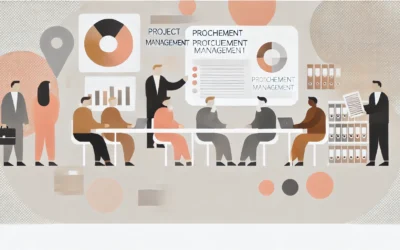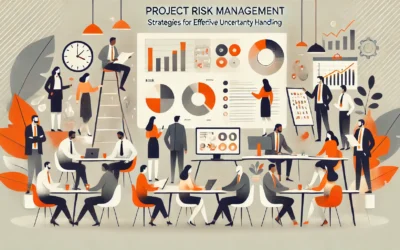Introduction: Why Your Project Needs a Solid Communication Plan
Have you ever been part of a project where information seemed to get lost in translation? Where team members weren’t sure what was happening next, or stakeholders were caught off guard by unexpected changes? If so, you’ve experienced firsthand the consequences of poor communication in project management!
A project communication plan isn’t just another document to tick off your project management checklist—it’s the lifeline that keeps your project running smoothly. In fact, according to the Project Management Institute, ineffective communication is the primary contributor to project failure one-third of the time, and has a negative impact on project success more than half the time. That’s a risk no project manager can afford to take!
In today’s complex project environments, where project teams might be spread across different locations and stakeholders have varying information needs, crafting a thoughtful communication plan is more crucial than ever. It ensures everyone receives the right information, at the right time, in the right format. This article will guide you through creating a project communication plan that keeps your project on track and helps team members and stakeholders stay informed throughout the project lifecycle.
Understanding Communication Planning in Project Management
What Is a Project Communication Plan?
A project communication plan is a documented framework that outlines how critical information will be communicated throughout your project. It specifies who needs what information, when they need it, how it will be delivered, and who is responsible for delivering it. Whether you’re working on a small project or a complex initiative, a clear communication plan will act as your north star for information sharing.
Think of your communication plan as a roadmap that guides information flow between all project stakeholders—from team members and project sponsors to clients and executive stakeholders. It identifies communication channels, frequency, and formats that best serve your project’s specific needs. The plan clearly defines which type of communication is appropriate for various aspects of the project, such as project status updates, major milestones, or project changes.
Unlike casual conversations or ad-hoc updates, a formal project communication plan ensures consistency, reduces misunderstandings, and provides structure that supports project transparency and accountability. In well-managed projects, the communication plan serves as the foundation for successful communication with stakeholders.
Why Communication Planning Matters
The importance of a communication plan cannot be overstated. Effective communication planning delivers several key benefits to your project:
- Reduces misunderstandings and conflicts: When everyone knows what information they’ll receive and when, there’s less room for confusion or crossed wires, which helps in removing any blockers to progress.
- Builds stakeholder trust and engagement: Regular, planned communication helps stakeholders feel involved and valued, increasing their commitment to project success. Keeping stakeholders updated throughout your project is essential for maintaining their support.
- Improves decision-making: When the right information reaches the right people at the right time, better decisions are made more quickly. This is particularly important when you want your project to stay on schedule.
- Mitigates risks: Many project risks stem from communication gaps. A solid plan helps identify and address potential issues before they impact your project deliverables.
- Enhances team collaboration: Team members who understand the communication framework collaborate more effectively, especially in virtual or distributed environments. This reduces wasted work and keeps everyone focused on the project goal.
- Streamlines project progress reporting: With clear protocols for when and how to give an update on tasks within the project, team members can efficiently communicate progress.
By investing time in creating a communication plan at the outset, you’re setting your project up for smoother execution and fewer surprises down the line. The benefits of a communication plan extend to every project, regardless of size or complexity.
Key Elements of an Effective Communication Plan
1. Stakeholder Analysis and Communication Needs Assessment
Every effective communication plan begins with identifying who your stakeholders are and understanding their information needs. When creating a project communication plan, start by asking:
- Who will be affected by or can influence on the project?
- What information does each stakeholder group need?
- How much detail is appropriate for each group?
- What’s their preferred communication style and medium?
- Who should be receiving the communication about specific project deliverables?
Create a stakeholder matrix that maps each group’s interest and influence levels. This helps prioritise your communication efforts and ensures you’re not overwhelming stakeholders with irrelevant information or leaving key players in the dark. Consider the following: project sponsors, team members, clients, executive stakeholders, and any other parties with a stake in your project outcomes.
Remember, different stakeholders have different concerns. The CTO might want technical updates by email, while executive sponsors might prefer high-level project progress updates and risk assessments through in-person meetings. Meanwhile, team members need detailed task instructions and technical specifications available through your task management software. Tailoring your approach to each group’s needs dramatically improves communication effectiveness and is a cornerstone of a successful communication plan.
2. Communication Methods and Channels
Once you’ve identified stakeholder needs, determine the most appropriate communication channels for delivering information. When you choose a platform or method, consider:
- Formal vs. informal communication: When should communications be documented in formal reports versus conveyed through casual check-ins? E.g., major milestones might require formal documentation, while daily updates might be handled through Slack or other messaging platforms.
- Push vs. pull communication: Will information be actively distributed (push) or made available for stakeholders to access when needed (pull)?
- Communication technology: What tools will support your plan—email, project management software, video conferencing, messaging apps, or collaborative workspaces? You’ll need to ensure these align with your organization’s existing systems.
Be strategic in your channel selection. For complex technical discussions about project details, a face-to-face meeting or video call might be more effective than email. For routine project status updates, a dashboard in your project management software might be ideal. For urgent project changes, instant messaging or phone calls could be necessary. The goal is to ensure clear and effective communication while not having team members on Slack all day.
The most effective project communication plans typically employ multiple communication channels, creating a comprehensive network that ensures information flows smoothly and reaches everyone who needs it. Your communication plan may specify different channels for different types of messages, considering which stakeholders need to be kept in the loop for each communication type.
3. Communication Frequency and Timeline
Establishing clear expectations about when and how often communication will occur helps stakeholders plan accordingly and prevents information overload. Consider including:
- Regular status meetings: Weekly team stand-ups, monthly steering committee reviews, or quarterly executive briefings
- Milestone reporting: Communications tied to specific project achievements or phase completions
- Exception reporting: Protocols for communicating when issues arise or targets are missed
- Ad-hoc communication: Guidelines for unplanned but necessary communications
Create a communication calendar that outlines scheduled communications throughout the project lifecycle. This visual timeline helps team members anticipate information needs and prepare accordingly, while giving stakeholders clarity on when they’ll receive updates.
4. Roles and Responsibilities
Clearly defining who is responsible for creating, approving, and distributing various communications prevents important messages from falling through the cracks. Your plan should specify:
- Who prepares each type of communication
- Who reviews and approves content before distribution
- Who delivers the message
- Who is responsible for gathering and incorporating feedback
For example, you might specify that the project manager prepares weekly status reports, the project sponsor approves major milestone announcements, and technical leads handle communications about their respective areas of expertise.
Assigning clear communication responsibilities ensures accountability and helps maintain consistent messaging across all project communications.
5. Communication Templates and Guidelines
Standardising the format and content of routine communications saves time and promotes consistency. Consider developing templates for:
- Status reports
- Meeting agendas and minutes
- Risk and issue documentation
- Change requests
- Milestone completion reports
Include guidelines on tone, language, and level of detail to ensure all communications align with your organisation’s standards and meet stakeholder expectations. Templates should be user-friendly while capturing all essential information.
Steps to Create Your Project Communication Plan
When you’re going to create a communication plan for your next project, follow these structured steps:
Step 1: Conduct a Stakeholder Analysis
Begin by identifying all project stakeholders and assessing their communication needs:
- Create a comprehensive list of everyone affected by or influential to your project
- Classify stakeholders according to their level of interest and influence on the project
- Document each stakeholder group’s information needs, preferred channels, and required frequency
- Identify any special considerations (language barriers, time zone differences, technical limitations)
- Note which people will receive what type of communication
This foundational step ensures your project communication plan addresses the unique needs of everyone involved in your project. The plan needs to account for communication with all team members and stakeholders, from executive stakeholders to every project team member with tasks within the project.
Step 2: Define Communication Objectives
Establish clear goals for your project communications. Write that goal with the entire project plan in mind. Your communication objectives might include:
- Ensuring all team members understand their roles and responsibilities, including delegating tasks effectively
- Maintaining stakeholder confidence through transparent project progress reporting
- Facilitating quick decision-making when issues arise that may have an effect on project deliverables
- Building team cohesion despite geographical distribution of project teams
- Managing expectations regarding project outcomes and timeline
- Keeping stakeholders updated on every major milestone throughout the project
- Communicating project changes efficiently to minimize disruption
Having well-defined objectives helps you design communications that serve specific purposes rather than simply sharing information for its own sake. Your goal will likely include keeping clear communication flowing between the project team and stakeholders throughout the entire project lifecycle.
Step 3: Develop Your Communication Matrix
Create a detailed matrix that outlines:
- What information will be communicated
- Who will receive each communication
- Who is responsible for creating and delivering each message
- Which methods and channels will be used
- How frequently each communication will occur
- The format and level of detail required
This matrix forms the heart of your communication plan, providing a quick reference guide for all project communications.
Step 4: Establish Communication Protocols and Standards
Document guidelines for:
- How to escalate issues or concerns
- The review and approval process for communications
- Standards for meeting management (agendas, minutes, facilitation)
- Expected response times for different types of communications
- How to handle sensitive or confidential information
- Processes for gathering and incorporating feedback
Clear protocols ensure consistency and help new team members quickly understand how communication works within your project.
Step 5: Create Templates and Tools
Develop standardised templates for routine communications and identify tools that will support your communication strategies:
- Design templates for status reports, meeting agendas, and other regular communications
- Select and configure appropriate communication tools and platforms
- Ensure all team members have access to and training for these tools
- Create shared repositories for communication archives and documentation
Well-designed templates and appropriate tools streamline the communication process and promote consistency.
Step 6: Document and Distribute the Plan
Compile your findings and decisions into a comprehensive communication plan document:
- Include all elements discussed above in a clear, accessible format
- Review the plan with key stakeholders to ensure it meets their needs
- Distribute the plan to all project participants
- Store the plan in an easily accessible location
- Review and update the plan periodically as project needs evolve
A documented plan serves as a reference point throughout the project and helps maintain communication consistency even as team members come and go.
Common Communication Plan Challenges and Solutions
Challenge 1: Information Overload
In the digital age, it’s easy to overwhelm stakeholders with too much information, leading to important messages being missed or ignored.
Solution: Apply the “need to know” principle—tailor information to each stakeholder group’s specific needs. Use executive summaries for detailed reports, visual dashboards for complex data, and layered communication approaches that allow recipients to drill down to the level of detail they require.
Challenge 2: Distributed Teams and Time Zones
With global teams becoming increasingly common, coordinating communication across different locations and time zones presents significant challenges.
Solution: Establish clear protocols for asynchronous communication, use collaborative tools that support time-shifted work, and rotate meeting times to share the burden of odd-hour calls. Document key decisions and discussions for team members who couldn’t attend live meetings.
Challenge 3: Stakeholder Disengagement
When stakeholders don’t engage with project communications, critical feedback and decisions may be delayed.
Solution: Make communications relevant and actionable. Clearly indicate when a response is required, personalise messages when possible, and use attention-grabbing subject lines or headers for important updates. Regularly solicit feedback on your communication approach and adjust as needed.
Challenge 4: Maintaining Consistency
As projects evolve, maintaining consistent, accurate communication becomes challenging, especially with multiple communicators.
Solution: Centralise communication management, use templates and guidelines consistently, and establish a single source of truth for project information. Regular communication team check-ins can help ensure everyone is aligned on messaging.
Challenge 5: Technology Barriers
Relying too heavily on technology without considering accessibility issues can create communication gaps.
Solution: Assess stakeholders’ technical capabilities and preferences before selecting communication tools. Provide alternatives for those with technology limitations, and offer training or support for new tools. Always have backup communication methods for critical information.
Best Practices for Project Communication Planning
1. Be Proactive, Not Reactive
Anticipate information needs rather than waiting for stakeholders to request updates. A proactive approach builds trust and demonstrates your commitment to transparency.
2. Keep It Simple and Relevant
Avoid jargon and unnecessary complexity. Focus on communicating what matters most to each audience. Clear, concise messages are more likely to be read and understood than lengthy, detailed reports.
3. Balance Formality with Flexibility
While formal documentation is essential for key decisions and milestones, allow for flexibility in day-to-day communications. Being adaptable in your approach ensures that urgent matters can be addressed quickly.
4. Plan for Two-Way Communication
Effective project communication isn’t just about disseminating information—it’s about fostering dialogue. Build feedback mechanisms into your plan and create opportunities for stakeholders to share their perspectives.
5. Monitor and Adapt
Regularly review the effectiveness of your communication plan. Solicit feedback from stakeholders about the value and relevance of communications they receive, and be willing to adjust your approach based on this input.
6. Leverage Visual Communication
Remember that complex information is often better understood when presented visually. Incorporate charts, graphs, infographics, and other visual elements to enhance understanding and retention of key messages.
7. Consider Cultural Differences
In global projects, be mindful of cultural differences in communication styles and preferences. What works well in one culture may be ineffective or even offensive in another. Adjust your approach accordingly.
Conclusion: Communication as a Project Success Factor
An effective communication plan is far more than a project management formality—it’s a powerful tool that can significantly impact your project’s success. By taking the time to understand stakeholder needs, establish clear protocols, and create appropriate channels for information sharing, you’re building a foundation for smoother project execution and stronger stakeholder relationships with all team members and stakeholders.
Remember that your project communication plan should be a living document, evolving as your project progresses and stakeholder needs change. Regular reviews and willing adjustments will ensure it remains relevant and effective throughout the project lifecycle. For different project types, your communication plan may need different approaches, but the core principles remain the same.
Ready to improve your project communications? Start by applying these principles to create a tailored communication plan for your next project. You’ll learn that a good communication plan keeps stakeholders throughout the project informed and engaged. Your stakeholders will thank you, your project team members will be more aligned, and your project outcomes will likely improve as a result.
Need a project communication plan template or more support with your project management journey? Project Success Hub offers additional resources, templates, and training to help you excel in all aspects of project management, from planning to execution. Take the next step in your project management career by exploring our comprehensive guides and tools designed for both beginners and experienced practitioners. With the right communication plan in place, you’ll be well on your way to delivering successful projects time after time.






0 Comments